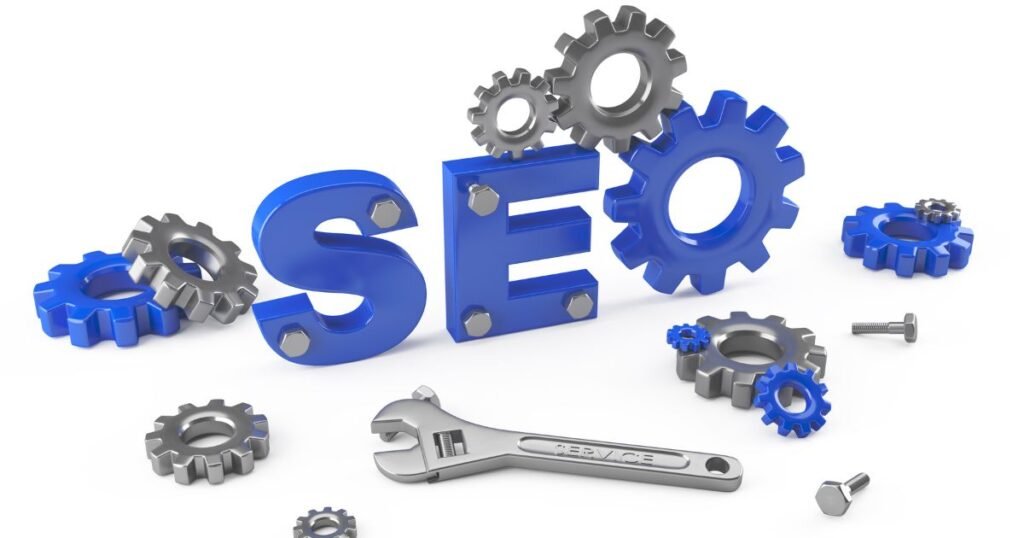Ready to take your website’s performance to the next level? Buckle up because we’re diving headfirst into the world of Technical SEO expert – the secret sauce behind search engine success. In this comprehensive guide, we’ll unravel the mysteries of website structure, page speed, and mobile optimization. Think of it as your roadmap to SEO supremacy!
Ever wondered why your site isn’t ranking as high as it should? It’s all in the technical details, my friend. From nailing the perfect URL structure to making your pages load faster than a cheetah on caffeine, we’ve got you covered. And don’t even get us started on mobile optimization – it’s not just a trend; it’s a game-changer.
But that’s not all. We’ll teach you the art of SEO audits, decoding schema markup, and securing your site like a digital fortress. So, grab a cup of coffee, settle in, and let’s demystify Technical SEO together. Your website’s about to become an SEO powerhouse!
Technical SEO and Technical SEO Expert | An Overview

Technical SEO refers to the technical elements of a website that can affect its visibility and performance in search engine results. It encompasses both on-page optimizations that directly impact a site’s code and infrastructure, as well as off-page factors like site speed and security that also influence search engine crawling.
At its core, technical SEO focuses on ensuring search engines can easily access, crawl, and index a website and its content. This requires an understanding of how search engines like Google operate and optimizing the underlying technical website elements to improve crawling, indexing, and ranking potential.
Some key elements of technical SEO include website architecture and site structure, use of proper URL structures, website speed optimizations, mobile responsiveness, and configuration, effective content indexing, XML sitemaps, robot.txt files, page metadata, structured data markup implementation, and more.
Mastering technical SEO is crucial because search engines are computer programs, so a website needs to be optimized to be understood by machines. Technical SEO establishes the search engine-friendliness of a site. It complements content-focused SEO tactics like keyword research, content creation, and link building.
The goal of technical SEO is to remove technical barriers that prevent search engines from fully accessing and comprehending a website, thus negatively impacting its search performance. A site with strong technical SEO fundamentals will be better positioned for organic growth and visibility.
Importance of Technical SEO

Technical SEO is crucial for any website looking to improve performance and search engine rankings. While content and links remain important ranking factors, search engines are also evaluating sites on technical merits. Optimizing technical elements provides the underlying foundation for search visibility and user experience.
Technical optimization makes pages easier for search engines to crawl, index and understand. It also impacts page speed and mobile-friendliness, which directly influence user engagement. Faster loading pages lead to lower bounce rates, more time on site, and higher rankings. Mobile optimization ensures accessibility for the growing segment of mobile users.
By addressing technical issues, websites can reduce site errors, eliminate crawl problems, and create a seamless experience. Technical audits identify areas for improvement. Implementing changes based on the audit results directly enhances SEO. Optimized technical factors also allow websites to take full advantage of the latest algorithm updates.
Overall, technical SEO should be a priority for SERP rankings and traffic growth. It improves site architecture, performance, and security. The technical foundation enables content and links to have a maximum possible impact. Websites with faster speeds, mobile responsiveness, and efficient crawling will perform better in searches. Technical SEO gives sites the infrastructure for growth and the agility to adapt to evolving search algorithms.
Website Structure Optimization
A website’s structure plays a pivotal role in technical SEO. An optimized site architecture allows search engines to crawl easily and index pages. Additionally, a clear and logical structure enhances the user experience.
Importance of a Clear and Logical Site Structure
- A simple, shallow, and intuitive site structure facilitates crawlability for search engine bots. Avoid complex nested hierarchies.
- Ensure pages are accessible through user-friendly URLs and as few clicks as possible.
- Group related content together logically and consistently. Pages on similar topics should have comparable URL paths and structure.
- Eliminate orphan pages that lack menu links or site architecture integration. Search engines often overlook these.
- Follow conventions for locational cues in URLs – country/region then city works better than vice versa.
URL Structure Best Practices
- Keep URLs short, clean and keyword-rich.
- Use hyphens (-) instead of underscores (_) and avoid excessive parameters.
- Implement 301 redirects from old to new URLs when restructuring or consolidating pages.
- Avoid generic names like page1.html. Create descriptive, meaningful URLs.
- Limit the length of URLs for improved crawling and click-throughs. Under 100 characters is recommended.
Importance of XML Sitemaps
- XML sitemaps enable search engines to crawl large websites efficiently.
- List all site pages and content in a sitemap along with metadata.
- Submit sitemaps to Google, Bing and other search engines for improved discoverability.
- Segment sitemaps into manageable chunks under 50,000 URLs.
- Update sitemaps frequently when content is added or removed from the site.
- Implement proper XML markup and formatting for sitemaps to be correctly interpreted.
- Use sitemap indexing tools to identify and fix crawling errors.
Page Speed Optimization
Fast page load times are critical for providing users with a positive experience on a website. Studies show that even minor delays in page load speed can cause significant drops in user engagement, conversions, and other key web metrics. Technical SEO strategies related to page speed aim to optimize a site for performance.
Impact of Page Speed
Page speed has become a ranking factor for Google and other search engines. Sites with consistently slow load speeds may see drops in search visibility and traffic. Users expect pages to load in two seconds or less; exceeding this threshold leads many to abandon a site. For ecommerce sites, conversion rates decline sharply as page load times increase.
Optimizing page speed provides many benefits:
- Better user experience and engagement
- Lower bounce rates
- Higher conversions and revenue
- Reduced server load and bandwidth costs
- Improved SEO rankings and traffic
Strategies to Improve Page Load Times
There are a number of technical optimizations that can improve page speed:
- Minify HTML, CSS, JavaScript and other assets
- Compress images and media
- Implement browser caching
- Reduce redirects
- Upgrade to faster web hosting
- Optimize database queries
- Lazy load non-critical assets
- Reduce the number of plugins/extensions
- Optimize web fonts
Mobile Page Speed Considerations
With mobile now accounting for over half of web traffic, mobile page speed is especially critical. Some key factors:
- Enable compression on mobile
- Optimize and resize images for mobile
- Eliminate render-blocking JavaScript
- Enable server-side caching for mobile apps
- Simplify design/layout for mobile contexts
- Eliminate unnecessary redirects
- Use AMP or Apple News for very fast mobile pages
Technical audits using tools like Google PageSpeed Insights and Pingdom can identify performance bottlenecks. Addressing these core web performance issues provides big wins for site speed and user experience.
Also Read: Transform Your Online Presence with SEO Content Writing Service
Mobile Optimization
Mobile usage has exploded in recent years, with more and more users accessing the web primarily through smartphones and tablets instead of desktop computers. This shift to mobile has major implications for technical SEO.
Mobile-First Indexing
In 2016, Google announced it would be moving to a mobile-first indexing scheme. This means Google will primarily use the mobile version of a site’s content to index pages and rank them in search results.
With mobile-first indexing, the mobile version of a site becomes the main entry point for search engine crawlers. If a site doesn’t have a mobile version, Google will attempt to render and index the desktop pages, but the results may be sub-optimal.
Having a mobile-friendly site is critical for technical SEO in Google’s mobile-first world.
Responsive Design
There are two main options for creating a mobile-friendly site: responsive web design and separate mobile pages/sites.
Responsive design is the preferred approach for technical SEO. With responsive design, the same HTML code is used for the mobile and desktop versions of a site. The page dynamically adapts to fit the screen size using CSS media queries and fluid layouts.
This is ideal for crawlers because there is a single URL for all devices. There are no separate mobile URLs to index. Responsive design also provides a seamless user experience as visitors move between devices.
Mobile SEO Best Practices
Here are some key mobile SEO best practices:
- Use responsive web design for a single URL site
- Optimize page speed for mobile devices
- Avoid interstitials and pop-ups that disrupt mobile users
- Design tap targets for fat finger usability
- Adapt content for smaller screens
- Enhance navigation for mobile
- Implement voice search optimization
Following mobile-first indexing and mobile SEO best practices is critical for technical SEO in today’s mobile world. A fast, responsive site provides the best search visibility and user experience.
Crawling and Indexing
Search engine crawlers are automated programs that browse the web to discover and index new pages. Proper crawling and indexing are crucial for search engine visibility.
Importance of Search Engine Crawlers
Search engine crawlers are the key to getting pages indexed and ranked in search results. They crawl the web by following links and browsing sites to understand page content and structure. Major search engines like Google and Bing have complex crawlers that use algorithms and machine learning to analyze pages.
Crawlers start by fetching a site’s home page, then follow internal links to discover new pages. They parse page content, titles, metadata, structure, and more to determine relevance. Crawlers regularly revisit sites to check for changes and refresh indexes. Having an optimized technical setup facilitates effective crawling of your site.
How to Optimize Website Crawling
Here are key tips to optimize the crawling of your website:
- Use a sitemap to guide crawlers to important pages, including new or updated content. XML sitemaps are ideal.
- Ensure website architecture is simple and logical. Avoid deep hierarchies and convoluted navigation.
- Apply proper on-page optimization with keyword-focused titles, meta descriptions, headings, and content.
- Use descriptive anchor text and alt text for internal links to inform crawlers about page relevance.
- Minimize the use of AJAX, Flash, iframes and other non-HTML content that’s difficult to crawl.
- Implement proper redirects for changed URLs and avoid broken links.
- Optimize page load speed and mobile-friendliness for better crawling.
- Allow crawlers in the robots.txt file and avoid blocking portions of your site.
Strategies for Ensuring Proper Indexing
Once crawled, you want pages to be properly indexed by search engines. Follow these tips:
- Check indexing using site: search queries and search console tools. Diagnose and resolve indexing issues.
- Avoid duplicate content across pages, which can confuse search engines. Implement proper canonicalization.
- Use noindex directives on pages not intended for search, like login and contact forms.
- Ensure important pages like blog posts and product categories get crawled frequently.
- Monitor pages dropping out of the index using change frequencies in the search console.
- Submit removal requests in the search console if outdated or low-value pages appear in the search.
- Study search analytics to identify pages attracting traffic to diagnose indexing issues.
With the right technical optimizations, you can facilitate effective crawling and indexing of your website for maximum visibility and traffic.
Also Read: The Power of Advertorial SEO Strategies Revealed By SEOJust
Technical SEO Audits

A technical SEO audit is a comprehensive analysis of a website’s technical health to identify issues that may be hindering performance and visibility. Conducting regular audits is crucial for maintaining and improving a site’s technical SEO.
Importance of Regular Audits
Technical audits should be performed on a regular basis, at least once per quarter. Many technical issues arise over time as site content and structure change. Audits ensure these problems are caught early before they significantly impact organic rankings and traffic. Staying on top of technical SEO also makes sites more crawlable and indexable.
Step-by-Step Guide to Conducting a Technical SEO Audit
A proper technical audit examines all aspects of a website that influence search visibility and user experience. The main areas to audit include:
Site Structure Analysis
- Evaluate overall site architecture – is content logically organized with proper hierarchy and navigation?
- Check for duplicate content issues.
- Identify broken pages and links.
- Review internal linking structure.
Page Speed Assessment
- Test page load times on both desktop and mobile. Pages should load in under 3 seconds.
- Check page size – aim for under 2 MB.
- Examine resource caching and compression.
- Optimize images.
- Minimize redirects.
Mobile-Friendliness Check
- Verify mobile responsiveness with Google’s Mobile-Friendly Test.
- Ensure the viewport is set properly.
- Check that tap targets are sized appropriately.
- Confirm website content is legible on mobile devices.
Crawling and Indexing Evaluation
- Test site crawlability with Screaming Frog or DeepCrawl.
- Submit XML sitemaps.
- Fix any crawling errors.
- Check index coverage in Google Search Console.
- Resolve indexing errors.
Technical Issues Identification
- Run the site through technical SEO tools like Screaming Frog, DeepCrawl, or Sitebulb.
- Check HTML tags and schema markup.
- Review server configuration.
- Identify ways to enhance website security.
Regular technical SEO audits allow problems to be diagnosed and fixed before they significantly damage visibility and performance. They are essential for maintaining robust technical health.
Also Read: 10 Best Search Engine Marketing Company in 2024
Schema Markup and Structured Data
Schema markup provides a way to annotate webpage content with machine-readable tags that describe the type, properties, and relationships of data on a page. When search engines crawl pages with properly implemented schema markup, they are better able to understand the content and present it in richer formats in search results.
Structured data is the collection of schema markup on a webpage that describes the content to search engines. By adding structured data, you make it easier for search engines to interpret the content on a page and determine the most relevant information to display in the search results. This allows search engines like Google to showcase your content in rich result formats such as featured snippets, knowledge panels, images, reviews, and more.
Some of the benefits of using schema markup and structured data for SEO include:
- Increased click-through rates – Schema can help your site stand out with rich results that catch users’ attention.
- Higher rankings – Structured data may be used as a ranking factor, helping pages with schema rank better than competing pages without.
- More traffic – Eye-catching rich results enable you to grab more real estate in search results, driving more clicks to your site.
- Improved context – Structured data provides additional semantic context to search engines about your content.
- Enhanced data collection – Structured data makes it easier for search engines to extract key information from your pages.
Overall, implementing schema markup and structured data is a great way to enhance your SEO efforts by improving search visibility, click-through rates, and discovery of your important pages and content. As search engines continue to place greater emphasis on understanding semantic meaning, structured data will become increasingly vital for SEO success.
Website Security
A secure website is crucial for both users and search engine bots. Google has emphasized website security as an important ranking factor and specifically recommends using HTTPS.
Switching to HTTPS shows that you value your users’ privacy and security. The data exchanged between a browser and your server is encrypted with HTTPS, protecting sensitive information like login credentials or payment details.
Some best practices for website security include:
- Migrate your site to HTTPS – It encrypts communication and shows users the site is secure through the padlock icon. Obtain an SSL certificate from a trusted Certificate Authority.
- Enable HSTS – HTTP Strict Transport Security tells browsers to only interact with your site over HTTPS, preventing downgrade attacks to HTTP.
- Renew certificates regularly – Expired certificates will cause security warnings. Set a reminder to renew SSL certificates before they expire.
- Eliminate mixed content – Mixed content refers to HTTPS pages requesting unencrypted HTTP resources, which causes warnings. Convert all links and references to HTTPS.
- Implement a Content Security Policy (CSP) – A CSP minimizes the risk of cross-site scripting attacks and data injection. Configure allowed sources for scripts, stylesheets, plugins, etc.
- Use security headers – Headers like X-Frame-Options and X-XSS-Protection defend against clickjacking and cross-site scripting attacks.
- Perform regular security audits – Run frequent scans to detect vulnerabilities or malicious code. Various automated tools can identify security flaws.
- Limit account access – Restrict administrator access to site files and databases to prevent unauthorized changes through compromised accounts.
By making website security a priority, you reassure users and search engines that your site is trustworthy and safe to interact with.
International SEO Considerations
Targeting International Audiences
With more users searching the web across language and country boundaries, international SEO is becoming increasingly important. To reach audiences worldwide, optimize your site for international visitors by providing translations and localized content.
Hreflang Tags for Multilingual Websites
Hreflang tags indicate which page version should be shown to website visitors based on their language or country. By implementing hreflang annotations, you can avoid duplicate content issues and ensure search engines display the correct language or regional URLs in search results.
The hreflang attribute is added to the <link> tag in the <head> section like this:
<link rel=”alternate” href=”URL” hreflang=”language_code”>
Here are some key tips for implementing hreflang tags:
- Use separate hreflang tags for each target language or region
- Match tags to the correct localized URLs
- Include self-referencing tags pointing back to the default or root language
- Follow the correct ISO language codes
- Place tags on all applicable web pages, including category, product, and homepage versions
With proper hreflang annotation, you can geotarget your multilingual site for higher international visibility and traffic.
Geotargeting Strategies
In addition to hreflang tags, further optimize your site for international audiences by:
- Providing country-specific content, products, and pricing
- Allowing users to switch language and region from a drop-down menu
- Using ccTLDs (country-code top-level domains) to signal geotargeting
- Creating designated landing pages for different countries
- Localizing contact info, addresses, and phone numbers
- Translating keywords and metadata into target languages
A thoughtful international SEO strategy allows you to effectively reach users worldwide and adapt your content for relevant local markets.
FAQs
1. What does a Technical SEO Expert do and why is their role crucial?
A Technical SEO Expert focuses on optimizing the technical aspects of a website for search engines. Their role is crucial because they ensure that the site is crawlable, indexable, and follows SEO best practices, directly impacting its visibility and performance in search engine results.
2. How can Technical SEO improve website speed and performance?
Technical SEO involves optimizing code, implementing efficient server configurations, and minimizing redirects, all contributing to faster page load times. By enhancing website speed, Technical SEO improves user experience and positively influences search engine rankings.
3. What is the significance of structured data in Technical SEO?
Structured data, implemented through schema markup, helps search engines better understand the content on a website. Technical SEO experts leverage structured data to enhance rich snippets in search results, providing more context and increasing the likelihood of attracting targeted organic traffic.
4. How does a Technical SEO Expert address website issues like crawl errors and broken links?
Technical SEO experts use tools to identify and rectify crawl errors, broken links, and other issues that hinder search engine crawlers. By ensuring a clean and error-free site structure, they enhance the site’s accessibility and overall SEO health.
5. Can Technical SEO impact mobile optimization and user experience?
Absolutely. Technical SEO involves optimizing websites for mobile devices, ensuring responsive design, and minimizing loading times on mobile. By prioritizing mobile optimization, Technical SEO experts contribute to a positive user experience, a crucial factor in both SEO rankings and user satisfaction.
Conclusion
And there you have it, fellow SEO warriors! Armed with the expertise of a Technical SEO expert, you’re now equipped to conquer the digital realm. Remember, optimization is an ongoing journey. So, put these strategies into action, audit regularly, and stay ahead of the algorithm game. Ready to skyrocket your website’s visibility with the help of a Technical SEO expert? Implement these tips today and watch your rankings soar. For more insider insights and personalized guidance, connect with SEOJust – because your success with a Technical SEO expert is just a click away.




